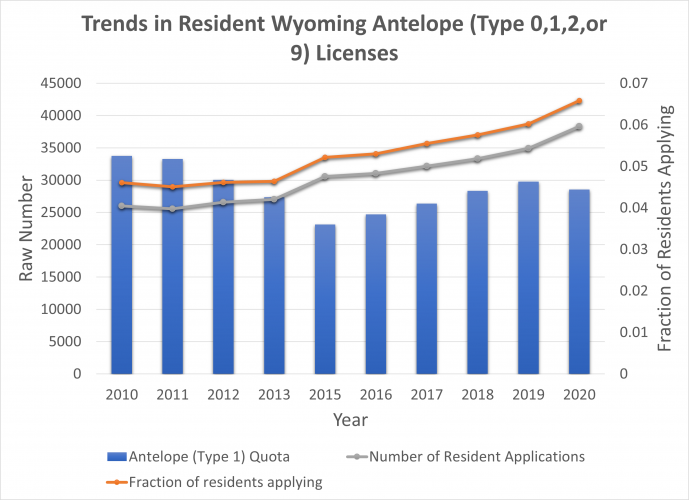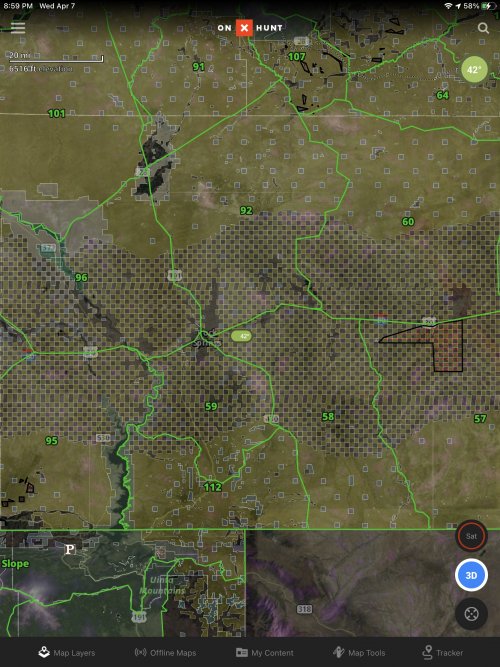Cornell Cowboy
Well-known member
My personal experience over the past two and a half decades of hunting antelope in WY as a resident is that draw odds are getting worse. The draw odds show that this is not only my perception, but it is a reality. After reading the threads on Population Growth and Hunting as well as the derailed discussion on R3, it made me wonder why my odds were getting worse. There are really three options: less antelope (and tags), change in the state population, or increase in resident hunter participation. I wanted to do this analysis for deer and elk too, but I don't have ready access to data on general tags. But since all antelope tags in Wyoming are limited quota, it seems like a reasonable proxy for other species. Anyways, I took the available draw data from 2010 onward (2014 is missing for some reason) and looked at: the population of Wyoming, the number of antelope tags allocated, and the number of applicants. What I found was interesting. First, note that the population of WY has grown from about 565K in 2010 to about 582K in 2020 for an increase over 10 years of only 3%. The number of resident applications has increased from about 26K to 38K for an increase of 46%! During this time, the number of tags have fluctuated, but have generally decreased from about 33.5K to 29.5K for a decrease of about 12%.
Conclusion: The primary reason that my tags have become difficult to draw is because the fraction of residents applying for an antelope license have increased by a whopping 41%!! Decreasing tags are a secondary effect (at least from a long-term perspective) and increase in population is a tertiary effect. I guess I would say that recruiting new hunters in WY is working pretty well!
The data is shown in the figure below:

Conclusion: The primary reason that my tags have become difficult to draw is because the fraction of residents applying for an antelope license have increased by a whopping 41%!! Decreasing tags are a secondary effect (at least from a long-term perspective) and increase in population is a tertiary effect. I guess I would say that recruiting new hunters in WY is working pretty well!
The data is shown in the figure below:






